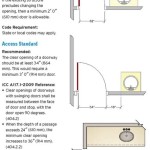How To Redo Your Bathroom Shower Tile
Redoing bathroom shower tile is a significant undertaking, but one that can dramatically improve the aesthetic appeal and functionality of the space. Whether addressing cracked or outdated tiles, water damage, or simply seeking a fresh new look, a careful and thorough approach is essential. This article outlines the key steps involved in removing existing tile, preparing the substrate, and installing new tile to achieve a professional-looking and long-lasting result.
Assessment and Planning
Before commencing any demolition or installation, a comprehensive assessment of the existing shower area is crucial. This includes identifying the type and condition of the existing tile, the state of the underlying substrate (cement board, drywall, etc.), and any potential sources of water damage or mold. Careful observation will inform decisions about the scope of the project, materials needed, and potential challenges that may arise.
Accurate measurements of the shower area are paramount for calculating the amount of tile and other materials required. It's always advisable to order slightly more tile than needed, accounting for cuts, breakage, and potential future repairs. Furthermore, the selection of new tile should consider factors such as size, material (ceramic, porcelain, glass, stone), texture, and slip resistance. Porcelain tile is generally recommended for shower floors due to its low water absorption rate and durability.
Beyond tile selection, other crucial materials need to be determined. This includes thin-set mortar, grout, sealant, backer board (if the existing substrate needs replacement), screws for backer board, waterproofing membrane (liquid or sheet), and appropriate tools. A detailed list of materials will help maintain efficiency and prevent interruptions during the installation process.
A design plan should also be formulated, outlining the desired tile layout, pattern, and any decorative elements. This plan should consider the placement of shower fixtures, niches, and any other features within the shower enclosure. A well-thought-out design will ensure a cohesive and aesthetically pleasing finished product.
Finally, establish a realistic timeline for the project. Redoing shower tile is a time-consuming process that involves multiple stages, each requiring sufficient drying and curing time. Rushing the project can compromise the quality of the work and lead to future problems. Factor in time for demolition, substrate preparation, tiling, grouting, sealing, and clean-up.
Demolition and Substrate Preparation
The demolition phase involves the careful removal of the existing shower tile. This process can be messy and physically demanding, requiring safety precautions such as wearing eye protection, gloves, and a dust mask. Using a hammer and chisel or a specialized tile removal tool, carefully break the existing tile and remove it from the substrate. Avoid causing unnecessary damage to the underlying surface.
Once the tile is removed, thoroughly inspect the substrate for any signs of damage, such as cracks, crumbling, or water damage. If the substrate is significantly damaged, it will need to be replaced with new backer board. Cement board is the preferred choice for shower walls and floors due to its water resistance and stability. Cut the new backer board to size using a utility knife or saw, and attach it to the studs using screws designed for cement board.
Regardless of whether the existing substrate is being retained or replaced, proper preparation is essential for ensuring a strong bond with the new tile. This includes cleaning the surface thoroughly to remove any debris, dust, or old adhesive. A scraper can be used to remove stubborn residue, followed by thorough vacuuming and wiping with a damp cloth.
Apply a waterproofing membrane to the prepared substrate. This membrane serves as a barrier to prevent water from penetrating behind the tile and causing damage to the wall structure. Liquid waterproofing membranes can be applied with a brush or roller, while sheet membranes are adhered to the surface with thin-set mortar. Follow the manufacturer's instructions carefully for application and drying times.
Prior to tiling, ensure the surface is level and plumb. Any significant imperfections should be addressed with self-leveling compound or shims. A level and plumb surface is crucial for achieving a professional-looking tile installation.
Tile Installation
The tile installation process begins with mixing the thin-set mortar according to the manufacturer's instructions. Use a notched trowel of the appropriate size to apply the mortar to the substrate, covering a manageable area at a time. The size of the trowel notch will depend on the size and type of tile being used. Press the tile firmly into the mortar, using a slight twisting motion to ensure good adhesion.
Use tile spacers to maintain consistent grout lines between the tiles. The size of the spacers will depend on the desired width of the grout lines. Regularly check the tile surface with a level to ensure that it is flat and even. Make adjustments as needed by adding or removing mortar behind the tiles.
Cutting tiles to fit around corners, fixtures, and other obstructions is often necessary. A wet saw is the most effective tool for cutting tile, providing clean and precise cuts. For smaller cuts or intricate shapes, a tile nipper can be used. Always wear eye protection when cutting tile.
As the tiling progresses, periodically clean excess mortar from the tile surface with a damp sponge. This will prevent the mortar from hardening and becoming difficult to remove later. Allow the thin-set mortar to cure completely according to the manufacturer's instructions before proceeding to the grouting phase.
The layout and pattern of the tile are crucial for the overall aesthetic. Before permanently adhering any tiles, dry-fit a section to visualize the final appearance. Pay close attention to the placement of cuts and the alignment of patterns. Make adjustments as needed to achieve the desired effect.
Grouting and Sealing
Once the thin-set mortar has fully cured, remove the tile spacers and prepare to grout the tile. Mix the grout according to the manufacturer's instructions, ensuring a smooth and consistent consistency. Apply the grout to the tile surface using a grout float, forcing it into the grout lines. Work in small sections, removing excess grout with the float as you go.
After the grout has had time to set up (typically 15-30 minutes), use a damp sponge to clean the remaining grout haze from the tile surface. Rinse the sponge frequently and avoid using too much water, as this can wash out the grout. Repeat the cleaning process as needed until the tile surface is clean and clear. Allow the grout to cure completely according to the manufacturer's instructions.
Once the grout is fully cured, apply a sealant to the grout lines. This will help to protect the grout from staining and water damage. Apply the sealant with a small brush or applicator, following the manufacturer's instructions. Allow the sealant to dry completely before using the shower.
Inspect the grout lines for any cracks or imperfections. If any are found, repair them with additional grout. Ensure that the repaired areas are properly sealed.
Caulk the joints where the tile meets the shower pan, walls, or other fixtures. Use a high-quality mildew-resistant caulk designed for bathrooms. This will create a watertight seal and prevent water from seeping behind the tile.
Final Inspection and Maintenance
After the grouting and sealing are complete, conduct a final inspection of the shower area. Check for any imperfections, such as loose tiles, uneven grout lines, or cracked caulk. Address any issues promptly to prevent future problems.
Proper maintenance is essential for prolonging the life of the shower tile. Regularly clean the tile and grout with a mild detergent and water. Avoid using abrasive cleaners, as these can damage the tile and grout. Use a squeegee after each shower to remove excess water and prevent the buildup of mildew.
Inspect the grout and caulk regularly for any signs of damage or deterioration. Re-seal the grout and re-caulk the joints as needed to maintain a watertight seal. Addressing minor issues promptly will prevent them from escalating into more significant problems.
Ensure adequate ventilation in the bathroom to reduce humidity and prevent the growth of mold and mildew. Consider installing or upgrading the bathroom exhaust fan.
By following these steps and maintaining a consistent level of care, the newly redone shower tile will provide years of beauty and functionality.

6 Walk In Shower Tile Ideas For Your Bathroom Remodel Dave Fox

6 Walk In Shower Tile Ideas For Your Bathroom Remodel Dave Fox

Bathroom Remodeling A Step By Guide Budget Dumpster

30 Small Bathroom Shower Tile Ideas Best Tips For 2024

How To Upgrade Bathroom Tile Without Replacing

Diy Shower Renovation Using An Amazing System

Update Your Ceramic Tile Without Replacement With Refinishing By Miracle Method We Ref Bathroom Wall Coverings Cladding Alternative To Tiles

How To Choose Shower Tile For Your Bathroom Remodel Pera

Bench Shower Tile Ideas Stephentortolacarpentry Bathroom Walls Remodel Renovation

5 Ways To Finish Shower Tile Edges For A Professional Look Designed






